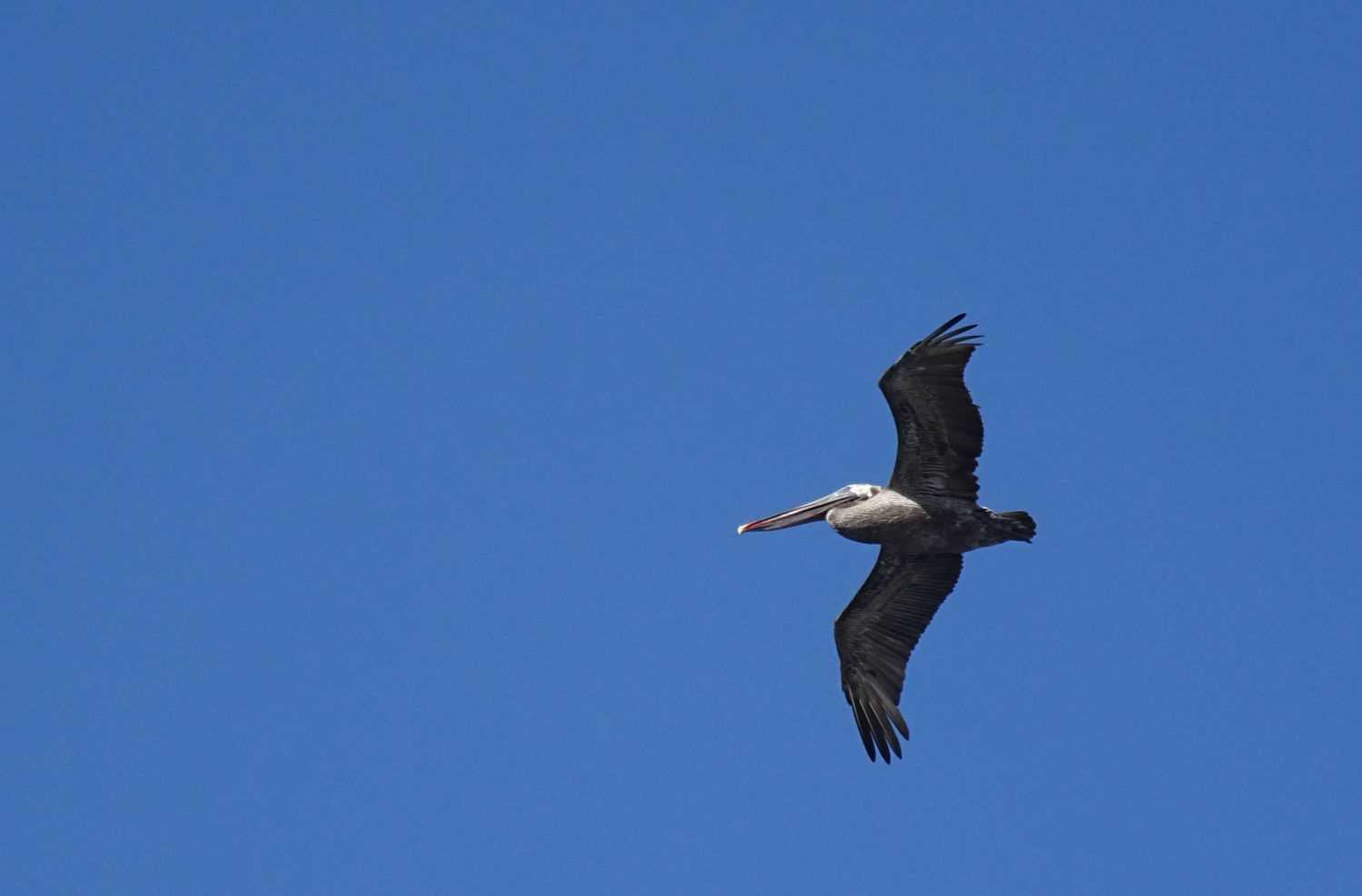Last night the National Geographic Islander navigated from Puerto Ayora to South Plazas Island and arrived early this morning. This island is located on the east side of Santa Cruz Island and was formed by an upheaval that raised both South and North Plazas from the depths of the sea.
This morning we headed ashore to look for Galapagos land iguanas and as we started along the trail there were several under the shade of the prickly pear cactus. A bit far from the trail we saw a hybrid iguana, a large individual with a dark body with yellow bands. This is a mixture between a land and a marine iguana. We observed this hybrid sunbathing on a lava rock as it was surrounded by some land iguanas.
We explored the coast and were marveled by the rough seas along the cliffs. We also watched the birds flying all around us. Some Red-billed tropic birds were making some noises while flying together, also brown pelicans, magnificent frigate birds, and Galapagos shearwaters flew very close to the cliffs and gave a great show with their graceful maneuvers in the air.
After a great morning we swam from the ship, and later on started to navigate towards Santa Fé Island. There we snorkeled from our Zodiacs in a very calm bay, and swam with a large school of spotted eagle rays, green sea turtles, and many different species of fish. Some of our guests took the option of kayaking along the cliffs of the island and enjoyed the landscape and the chance to observe Galapagos sea lions from the kayaks.
Later on in the afternoon we got ashore for an exploration of the coast and interior of Santa Fé Island. There we encountered the endemic land iguana from this island, Galapagos mockingbirds, and also the top land predator in the archipelago, the Galapagos hawk. We got to the landing beach where a colony of Galapagos sea lions was relaxing on the shore as the sun was beginning to set.







